Corpus Christi Association of Realtors has posted the North Padre Island Housing Report for February 2024.
Our active listing median prices have dipped the past month to $403,700 this past month which is an 1.6% decrease from where it was compared to last Febuary at this time! CCAR shows us the data that is increasing for active listings by 82.3% with a total of 257 properties this past month while inventory Has risen at 8.6 compared to 2.8 last year at this time.
Days on the market for sale increased this past month with an average of 86 days and the highest categories for sales with 40.0% of all the sales being priced between $300,000 – $399,999. The market is still staying solid so far into 2024 with properties available across many pricing areas. North Padre Island’s newest development Whitecap NPI is open for sales of their lots in Phase 1, Contact Coastline Properties Agent Ms. Amber Spicak at their office for all pre-sales. amber@coastline-properties.com
We learned this morning that inflation as measured by the Consumer Price Index was 0.4 percent in February and 3.2 percent over the past year. Core inflation, which leaves out volatile food and energy prices in order to better parse inflation’s underlying trend, was also 0.4 percent over the month and 3.8 percent over the last year.
Cheri Sperling is the owner of Coastline Properties with a dedicated team of agents specializing in residential listings, sales, and property management in the Padre Island real estate market. Coastline’s team is the most knowledgeable real estate office on Padre Island. No pressure style, patience, and an intimate understanding of the local market. They go to work for you!





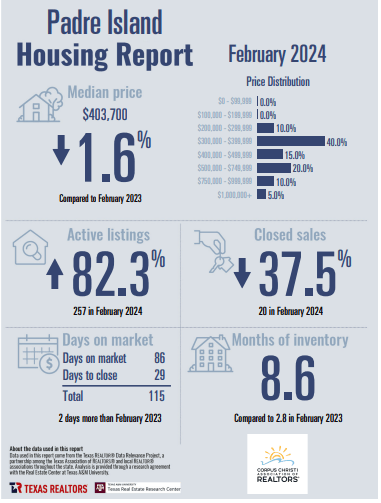
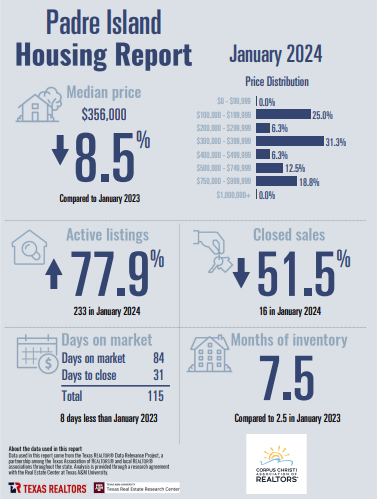



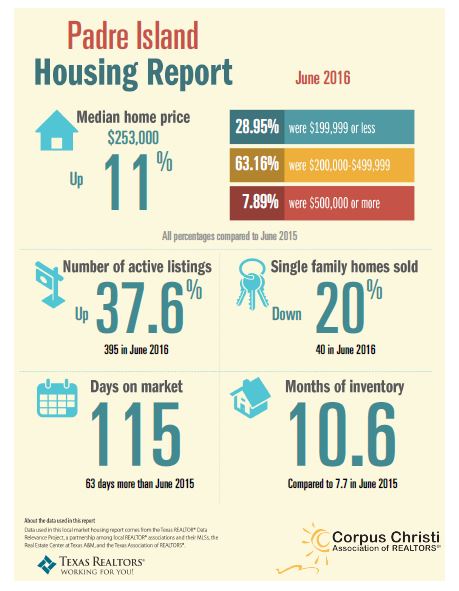



 STOP! Or, you soon will be! On August 18th, a traffic light at the intersection of Aquarius and SPID was approved by the City Council.
STOP! Or, you soon will be! On August 18th, a traffic light at the intersection of Aquarius and SPID was approved by the City Council.
 CORPUS CHRISTI – Plunging oil prices may be a relief for Coastal Bend residents at the pumps, but they’re having little influence on rents or mortgage payments.
CORPUS CHRISTI – Plunging oil prices may be a relief for Coastal Bend residents at the pumps, but they’re having little influence on rents or mortgage payments.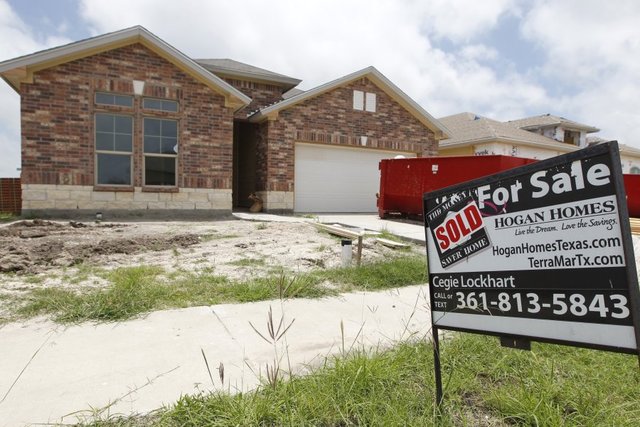


 On Thursday, February 13th, at the Padre Island Business Association lunch, Jeff Shea, Site Manager for M&G Chemicals, spoke to update us on the M&G Chemicals PET/PTA Facility.
On Thursday, February 13th, at the Padre Island Business Association lunch, Jeff Shea, Site Manager for M&G Chemicals, spoke to update us on the M&G Chemicals PET/PTA Facility.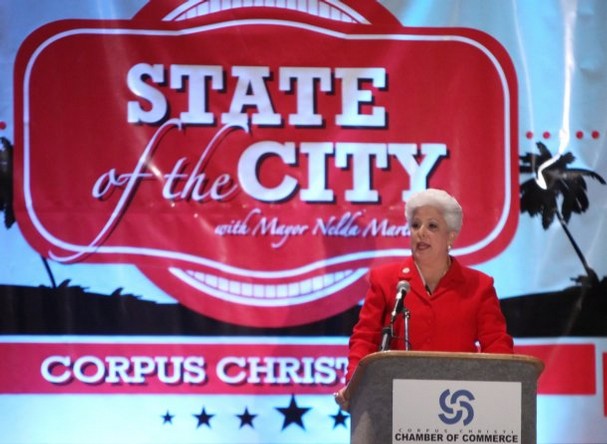



 The effects of the government shutdown are rippling through the real estate industry, and practitioners are feeling the pain all over the country. Most of the complaints we’re fielding are about USDA loans, which have been entirely frozen. Real estate pros are seeing deals fall apart, as the Department of Agriculture has shuttered its mortgage division during the shutdown.
The effects of the government shutdown are rippling through the real estate industry, and practitioners are feeling the pain all over the country. Most of the complaints we’re fielding are about USDA loans, which have been entirely frozen. Real estate pros are seeing deals fall apart, as the Department of Agriculture has shuttered its mortgage division during the shutdown.
